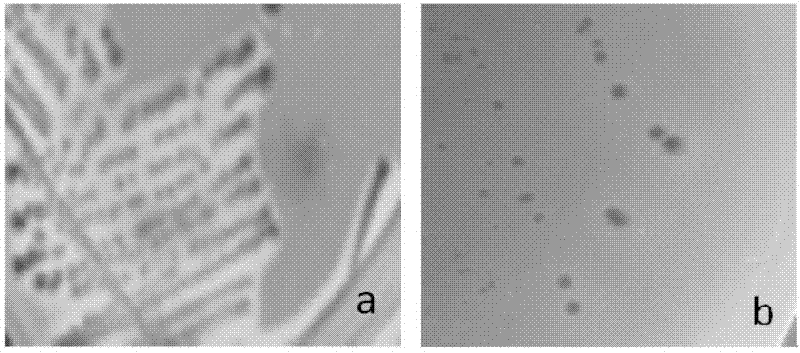Enzymolysis preparation method of phosphatidylinositol
A technology of phosphatidylinositol and phospholipase, which is applied in the field of enzymatic hydrolysis and preparation of phosphatidylinositol, can solve the problems of large solvent consumption, high cost, difficulty in wide application, etc., and achieves short reaction time, simple method and low cost Effect
- Summary
- Abstract
- Description
- Claims
- Application Information
AI Technical Summary
Problems solved by technology
Method used
Image
Examples
preparation example Construction
[0019] 1. Preparation and determination of phosphatidylinositol products
[0020] Step 1, pretreatment of raw materials
[0021] Weigh 5g of powdered soybean lecithin, dissolve the sample with 50mL of cold chloroform (4°C), add 60mL of cold methanol after fully dissolved, and stir for 1h. Centrifuge at 2°C and 5000r / min for 10min, discard the upper layer solution, collect the solid and dissolve it with 25mL of cold chloroform (4°C), then add 60mL of alkaline methanol for leaching, stir well, and centrifuge for 10min under the same conditions to collect the solid. The above operation is repeated twice. The finally obtained insoluble solid is the pretreated soybean lecithin after drying.
[0022] Step two product purification
[0023] Dissolve every 50 mg of the enzymatic hydrolysis product with 10-100 mL of n-hexane solvent, fully stir at 200 r / min, 4 °C for 1 h, centrifuge at 8000 r / min, 4 °C, concentrate and dry the supernatant in a vacuum desiccator, The dried product is...
Embodiment 1
[0027] Refer to the method of raw material pretreatment in step 1 to process soybean lecithin to obtain soybean lecithin after pretreatment. Weigh 100 mg of soybean lecithin after pretreatment, dissolve it in 20 mL of ether, add 0.001 mol / LCa 2+ 10mL of Tris-HCl buffer solution, adjust the pH to 8, add 50units of phospholipase D, react in a constant temperature water bath at 37°C, at a speed of 800r / min for 4h, and obtain the enzymatic hydrolyzate, refer to step 2, use 100mL for every 50mg of enzymatically hydrolyzate Dissolve in n-hexane solvent, stir thoroughly at 200r / min, 4°C for 1h, centrifuge at 8000r / min, 4°C, place the supernatant in a vacuum desiccator to concentrate and dry, and use the dried product with a volume fraction of 5% The phosphatidylinositol product was obtained by rinsing three times with acidic ethanol (pH=6), and the purity of the phosphatidylinositol was 80.18%.
Embodiment 2
[0029] This example is basically the same as Example 1, except that the amount of phospholipase D added is 150 units to obtain a phosphatidylinositol product with a purity of 90.13%.
[0030] Second, the pH factor (7-9)
PUM
 Login to View More
Login to View More Abstract
Description
Claims
Application Information
 Login to View More
Login to View More - R&D
- Intellectual Property
- Life Sciences
- Materials
- Tech Scout
- Unparalleled Data Quality
- Higher Quality Content
- 60% Fewer Hallucinations
Browse by: Latest US Patents, China's latest patents, Technical Efficacy Thesaurus, Application Domain, Technology Topic, Popular Technical Reports.
© 2025 PatSnap. All rights reserved.Legal|Privacy policy|Modern Slavery Act Transparency Statement|Sitemap|About US| Contact US: help@patsnap.com



